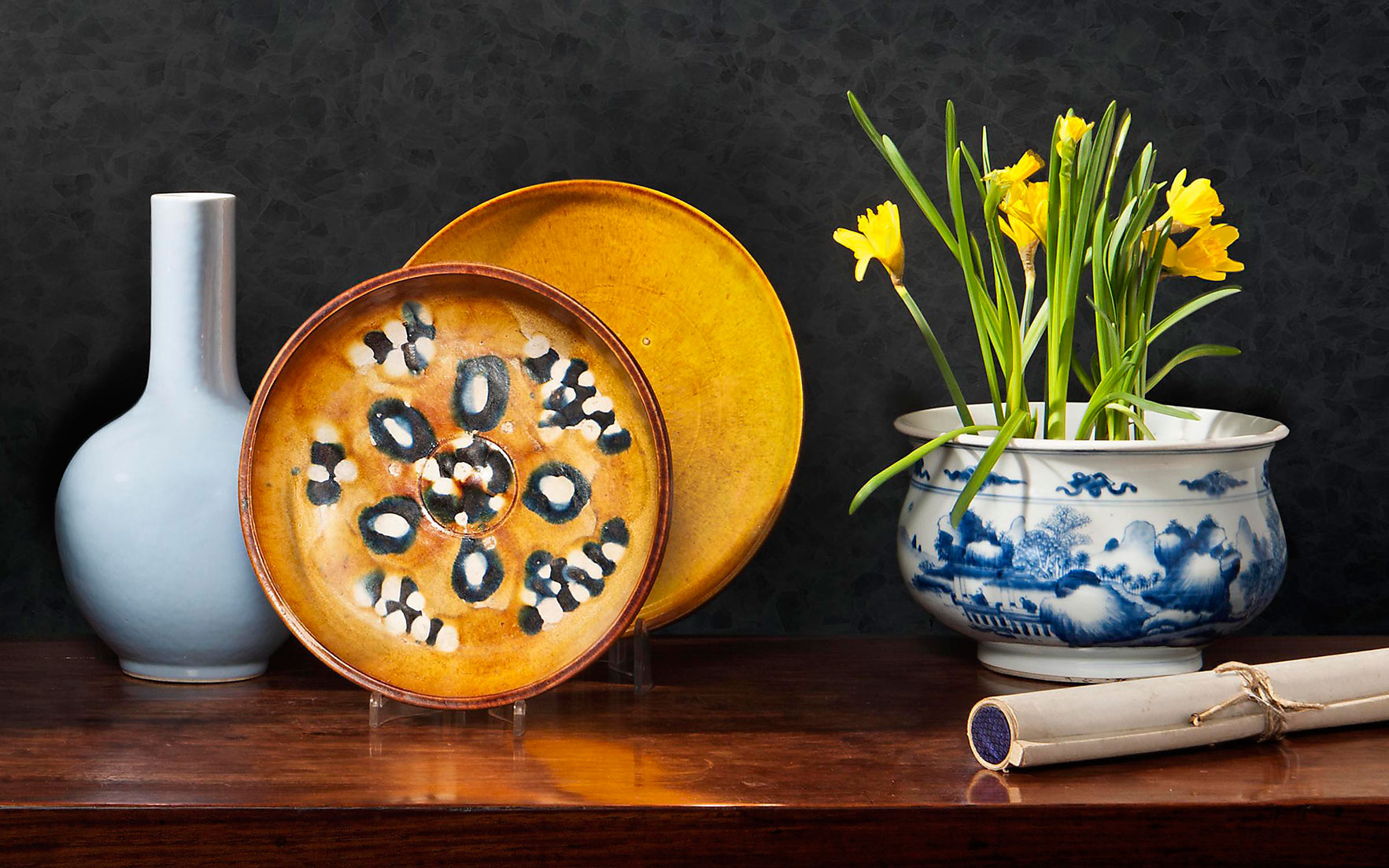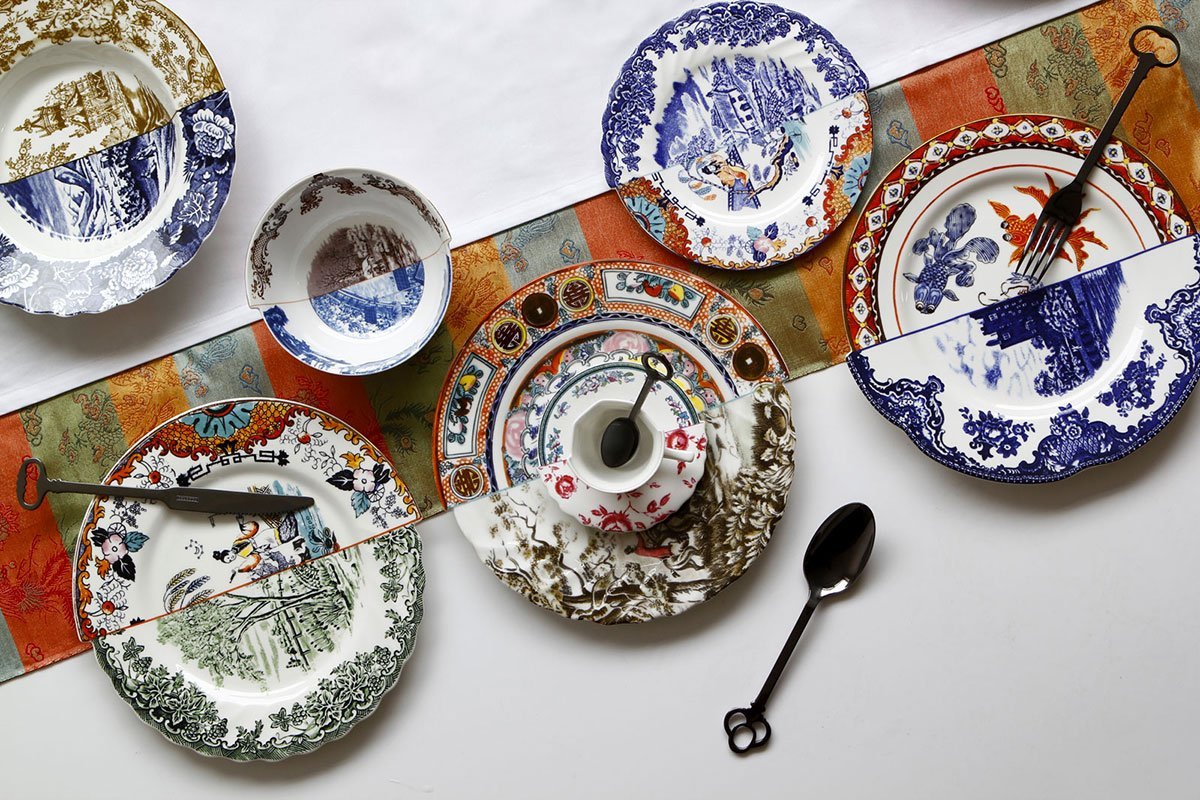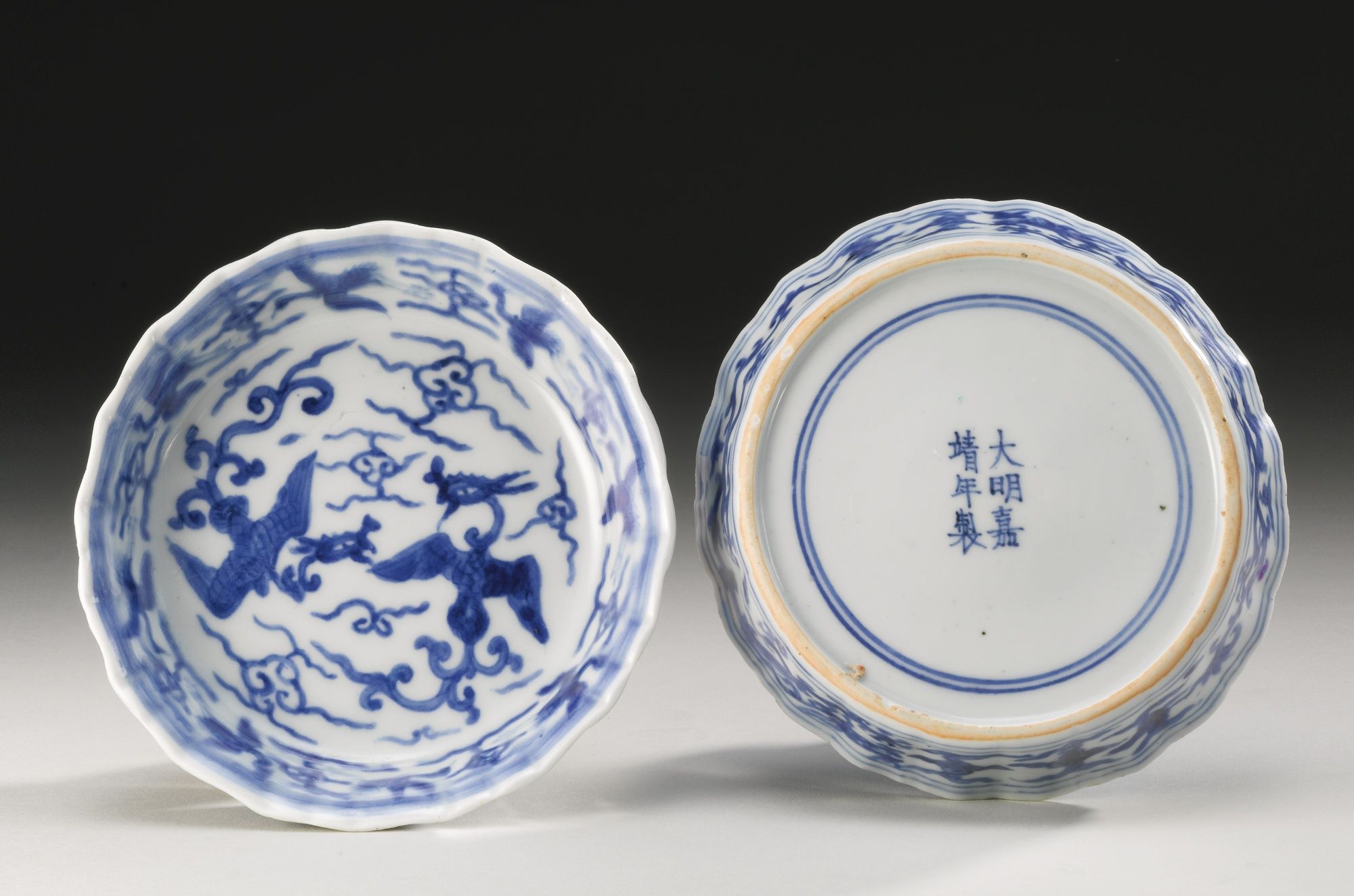White gold of Tianxia. Chinese porcelain

The optimal ratio of porcelain stone and kaolin, giving a ringing thin-walled shard, touched by a matte blush, was not found immediately. Celadons of the Tang epoch, massive vases with embossed décor, covered with iron-containing glaze, played an important role of a transitional link from Han Chinese ceramics to Chinese porcelain. The degree of oxidation of iron determined the color of the product: with an excess of oxygen, the vessel acquired a yellowish color, and with a limited access of air, the vases were painted in soft bluish tones.
The golden age of Chinese porcelain began in 1004 when the first porcelain factory was launched in Jingdezhen to serve the needs of the court ceremonial. The rich deposits of kaolin along the shores of Poyang Lake made it possible not to feel sorry for white clay for porcelain dough. To improve the plastic properties of the material, the kneaded mass was kept in special storages for at least a decade, and before being put into the oven, they were beaten with hammers for a long time. From the flame of tightly sealed underground furnaces, the “white gold of Tianxia” emerged - graceful thin shards with a translucent wall that were not inferior in strength to the iron. Roasting lasted for two days. On the third day the oven was opened and it was allowed to cool down until the next morning. Photo christies.com
Photo christies.com
Spar glaze was harvested separately by mixing the ingredients in slightly different proportions than when kneading dough. Glazing compositions were applied in several layers of different degrees of transparency, with the result that a matte sheen appeared on the surface of the products. Cups with hidden patterns that appear in the thickness of the walls when heated were of the special priz. It is easy to explain the focus: the vessels were glued together from two halves, covering the inside with a floral pattern, and leaving the outer part white.
In the Yuan era, the refined technique of underglaze cobalt painting appears which than became the hallmark of medieval China. The thick blue tint of cobalt paints imported from the islands of Sumatra and Java emphasized the connection of the ruling house with the deified Sky and effectively shaded the shining whiteness of the crock. Photo tooveys.com
Photo tooveys.com
During the Min period, spar glaze palette was supplemented with rich shades of carmine and cinnabar, which were probably extracted from copper powder. The ruby-red glazed porcelain was revered as a state relic and was involved in the ceremony of worship. Unfortunately, the technology of making red porcelain has been lost for centuries. There are no more than a hundred copies of it left around the world, ten of which are in Jingdezhen Ceramics Museum. Porcelain vessels, decorated with monochrome yellow painting, represented the reigning bogdyhan. A calligraphically written stamp reproduced the slogan of the board.
Read also: Kintsugi. Japanese art of restoration
Starting from the 15th century, Utsai style, using five basic tones — yellow, red, blue, white, and green — becomes popular in Tianxia. The drawing at first seems to be sketchy and devoid of fantasy, but a deep symbolic subtext breaks down behind imaginary simplicity. The lotus flower signified purity of thoughts and nobility of spirit, peony - wealth and honor, an orchid branch - family happiness and longevity. A pair of phoenixes or mandarin ducks foreshadowed loyalty in love, and the image of a deer indicated the high position of the cup holder. Plots with dragons, lions and elephants personified the desire of power, strength and happiness to the imperial family, and the composition “three friends of a cold winter” from a branch of blossoming plum, young shoots of bamboo and pine served as the personification of courage and resilience. Photo boingboing.net
Photo boingboing.net
During the tea ceremony in the imperial palace, chinaware served as the ranking of participants. The right to drink tea from a piala with a print of a five-fingered dragon under amber glaze was possessed only by crowned persons - the Son of Heaven with his second half and the widowed empress, and the combination of the background and monogram colors could determine the title of grandee and rank of concubine. Photo interest.pics
Photo interest.pics
The reign of the Manchu Qing dynasty was marked by the rapid development of polychrome porcelain painting. The great admirer of porcelain was the emperor Kangxi, in which seven-color cobalt pigments came into vogue with variations from pale blue to dark purple. The closest descendants of Kangxi, the son Yongcheng and the grandson Qianlong, patronized the “doucai” technique, which means “rival colors”. The combination of underglaze and overglaze painting techniques opened the way to the creation of complex subject paintings based on classical Chinese literature. Before glazing, the outline of the future pattern was marked with cobalt, and after firing, the products were painted with enamel paints.
Cover photo nouahsark.com





















